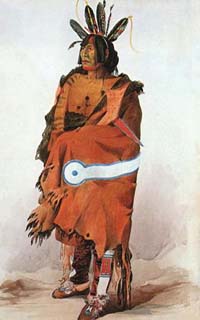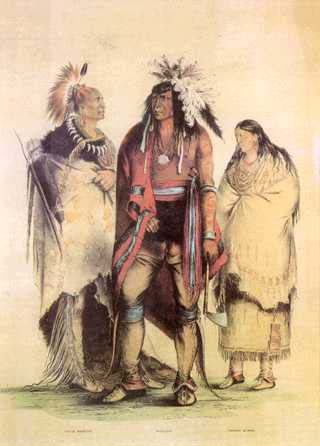Anth 3511 Professor Gibbon
First Settlement
1. Introduction. Basic questions of North American archaeology are: When did people first appear in North America? Where did they come from? What did they look like? What was their culture (socio-political organization, group size, tools, etc.) like?
A. A baseline is the undisputed evidence for the presence of a fluted point manufacturing Clovis culture throughout most of the inhabitable continent between about 9200-8900 BC.
2. Pre-Clovis cultures. One of the most hotly debated topics in North American archaeology today is whether people lived in North America before the 9200 BC Clovis period and, if so, how much earlier. This is called the Pre-Clovis period.
A. Examples of proposed but rejected or questionable early sites are Calico (Calif.), San Diego complex, Old Crow Flats in Yukon, Orogrande Cave in New Mexico, Pedra Furada in Brazil, and Pikimackay Cave in Peru.
B. Very early sites are not accepted for one or more of the following reasons: associations inconclusive, deposits mixed or disturbed, radiocarbon dates contaminated or unassociated, artifacts are really naturofacts.
C. Among the more recent sites that are generally accepted, are Monte Verde in Chile (11,000-10,500 BC, Tom Dillehay), Meadowcroft Rockshelter in Pennsylvania (12,500-12,000 BC, James Adovasio), Fort Rock Cave in Oregon (10,000 BC), Bluefish caves in the Yukon (13,000-11,000 BC), Chesrow site in Wisconsin (10,500 BC), Florida sink hole sites (10,000 BC).
D. We can conclude that the earliest securely dated human settlement in North America dates to ca. 12,000-10,000 BC, with a hint of earlier occupations.
3. Biological evidence.
A. Sinodonty (Chinese-like teeth, Christ Turner). Across Bering Strait ca.12,000 BC.
B. Gm allotype genetic research. Evidence of three migrations from NE Asia (Ed.s Note: This was recently disputed in a recent Science article which suggested 1 migration not three).
C. Skeletal evidence: Wormian bones and some other skeletal traits indicate Asian origins.
4. Linguistic evidence. Joseph Greenberg suggested three separate migrations: Amerind before 9,000 BC, Na-Denes (Athabaskan) ca. 7000 BC, and AleutEskimo about 2000 BC.
5. Archaeological evidence outside the Americas.
A. Humans expand into the Arctic area from Europe and northeast Asia about 40,000 BP. Wurm glaciation; steppe tundra; site clusters at Malta (25,00013,000 BP) and Dyukhtai(14,000-1 2,000 BP) with microblades.
B. Sites in Alaska/Yukon: Mesa in no. Alaska (ca. 9700 BC), Tanana Valley in Alaska (9700 BC), Bluefish caves in Yukon(11,000-13,000 BC).
6. Geological/geographical evidence.
Bering Land Bridge 75,000-45,000 BP, 25,000-14,000 BP.
7. Conclusions.
A. Biologically modern humans of a generalized Asian stock entered the Americas from northeast Asia after 18,000 BP.
B. The earliest firm evidence in North America is between ca. 10,000-12,000 BC, with a hint of earlier occupations.
C. People were hunter-gatherers who pursued big-game, smaller animals, perhaps fish and sea mammals, and some wild vegetable foods. People "dribbled" across in small family groups.
D. Assumed to have walked across the Bering Land Bridge but could have sailed down the coast as well.
E. Hang lose! Could be surprises.
Go To The Index Page

